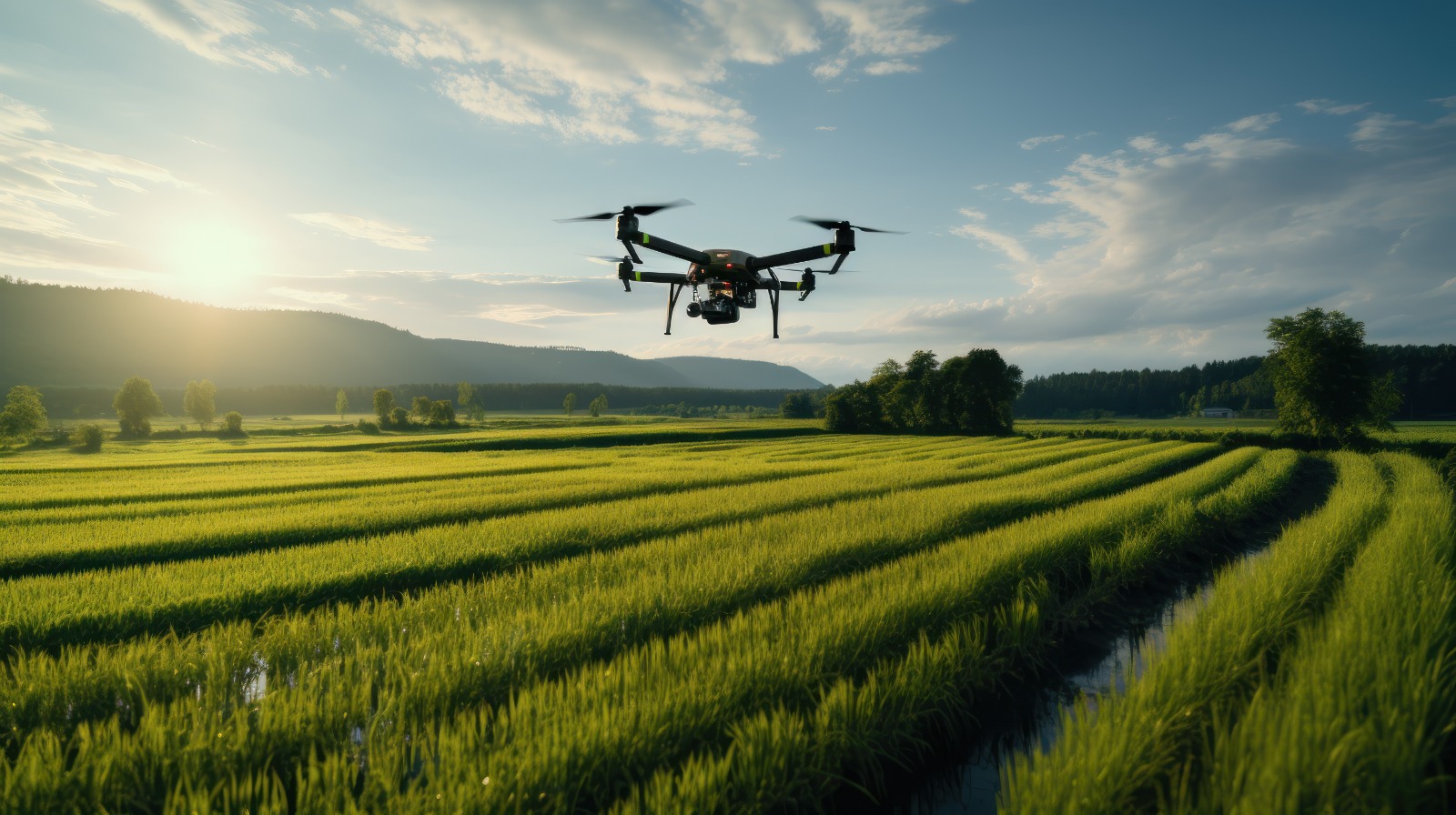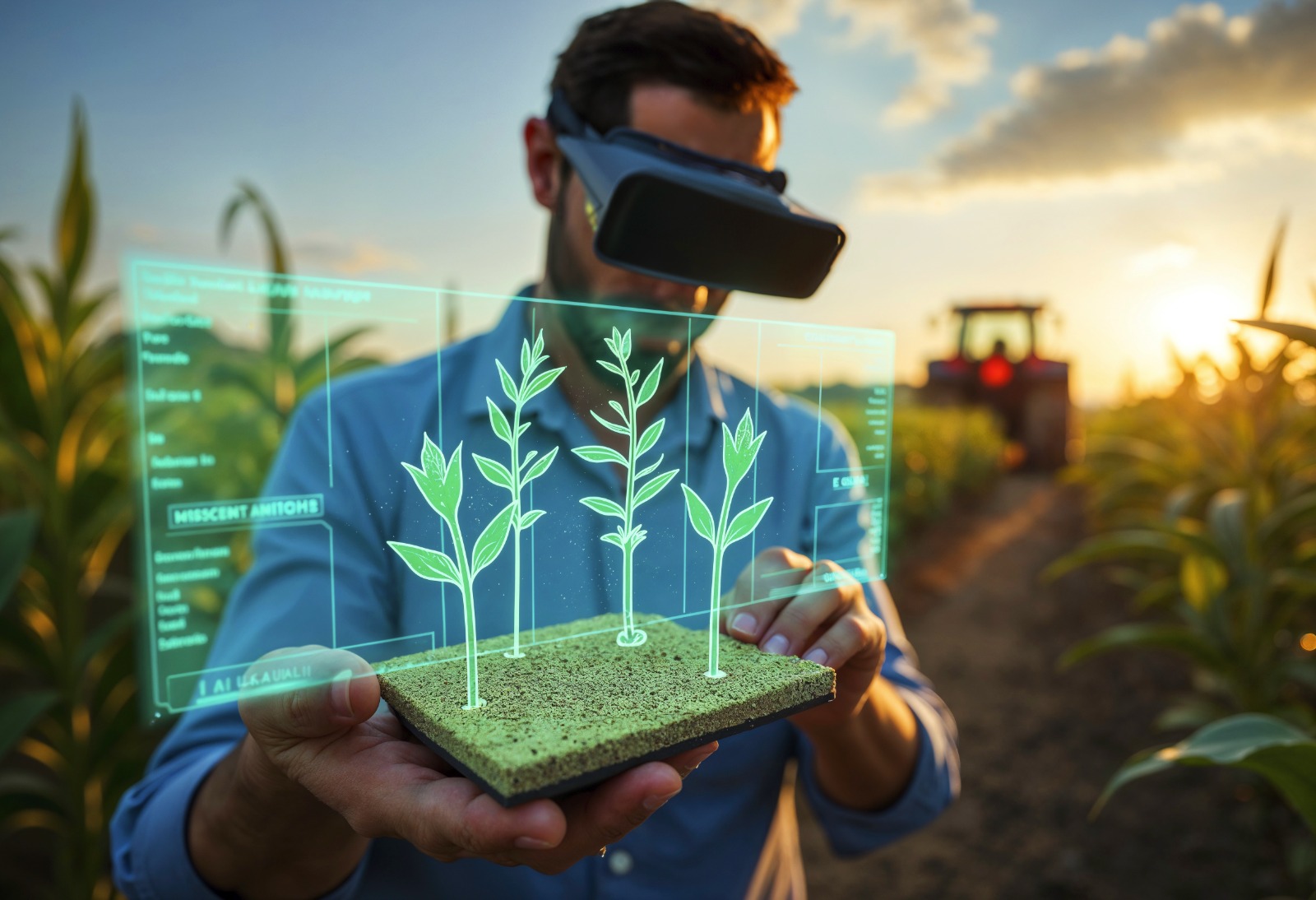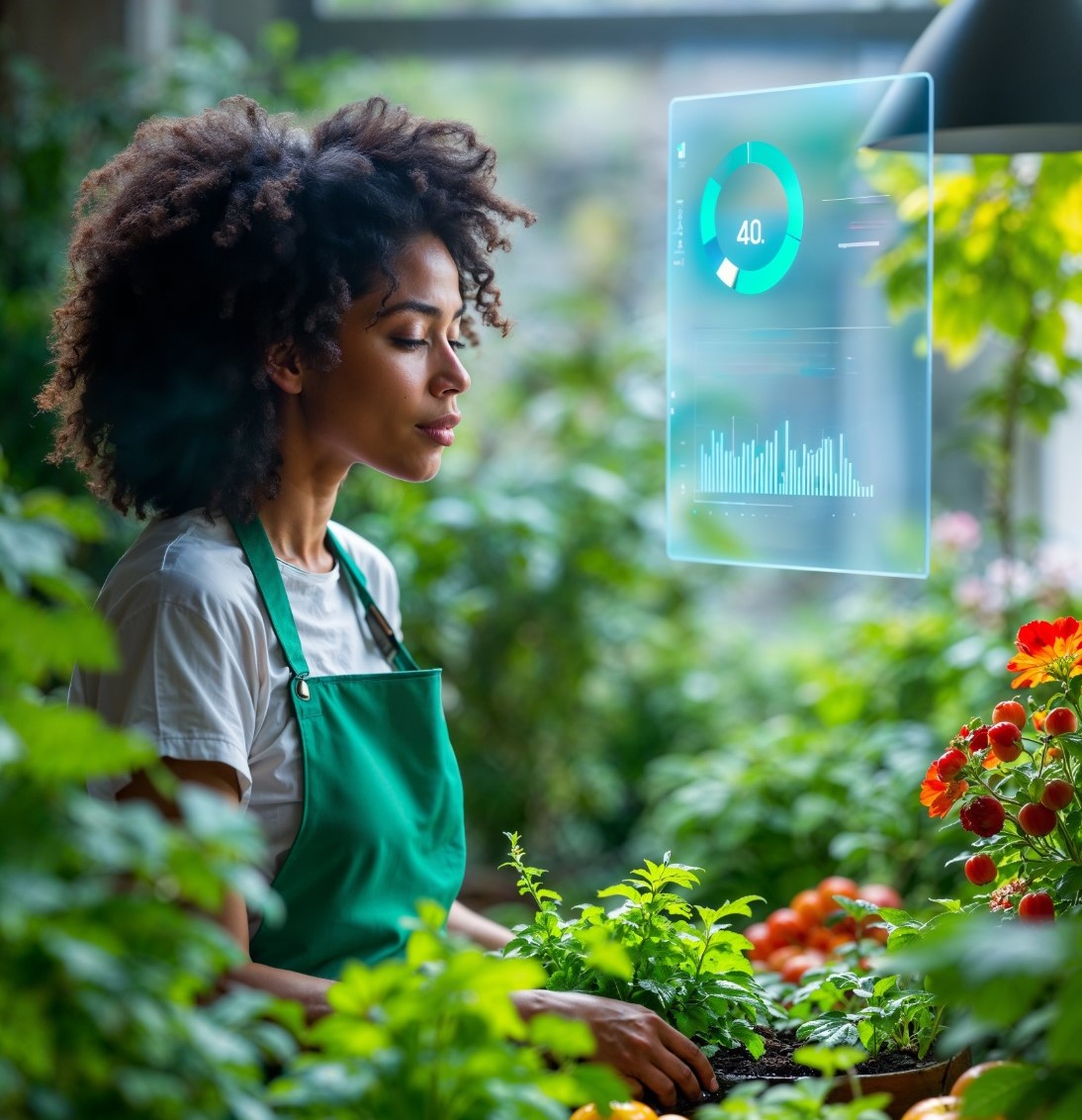AI in Agriculture Management and It’s Impact
The backbone of global food security, is undergoing a revolution with the integration of AI in Agriculture Management. As the world’s population grows and the demand for food increases, the pressure on agricultural systems to become more efficient, sustainable, and productive has never been greater. AI is playing a transformative role in addressing these challenges, reshaping the way farmers manage their operations and make decisions.
1. Precision Farming
AI has ushered in a new era of precision farming, where technology helps farmers optimize every aspect of crop production. By analyzing data from sensors, drones, and satellites, AI systems can provide detailed insights into soil conditions, weather patterns, and crop health. For example:
- AI-powered sensors detect variations in soil moisture and nutrient levels, enabling targeted irrigation and fertilization: These sensors not only measure soil characteristics but also provide real-time updates through connected devices. Farmers can access these insights via apps, ensuring immediate action to improve crop growth and yield.
- Drones equipped with AI algorithms monitor fields for signs of disease, pests, or stress, allowing for timely interventions: These drones utilize high-resolution cameras and thermal imaging to identify subtle changes in plant health. AI processes this data to highlight affected areas, minimizing crop loss by enabling early and targeted treatments.

This level of precision reduces waste, lowers costs, and increases yields, making farming more sustainable and profitable.
2. Predictive Analytics
AI is revolutionizing decision-making in agriculture through predictive analytics. By processing vast amounts of historical and real-time data, AI models can forecast:
- Weather conditions, helping farmers plan planting and harvesting schedules: AI analyzes data from meteorological stations and satellites to provide hyper-localized weather forecasts. This enables farmers to time their activities, such as irrigation or spraying, more effectively, reducing the risk of damage caused by adverse weather conditions.
- Pest and disease outbreaks, enabling proactive measures to protect crops: AI uses environmental factors, such as temperature and humidity, to predict conditions favorable for pests or diseases. Farmers receive alerts and recommendations to apply preventative measures, avoiding large-scale infestations.
- Market trends, guiding farmers on which crops to grow for maximum profitability: AI platforms assess factors like regional demand, international trade policies, and historical pricing trends to suggest the most lucrative crops for a given season, helping farmers maximize revenue.
These insights empower farmers to make informed decisions, reducing risks and enhancing productivity.
3. Autonomous Farming Equipment
The development of AI-driven machinery is transforming farm operations. Autonomous tractors, harvesters, and drones are reducing the need for manual labor while improving efficiency. These machines can:
- Navigate fields using GPS and AI algorithms, ensuring precise planting and harvesting: Equipped with advanced sensors and machine learning algorithms, these vehicles can map fields in detail and adjust their operations to the specific characteristics of each plot, such as soil type and topography.
- Identify weeds and apply herbicides only where needed, minimizing chemical use: Advanced vision systems in machinery detect weeds at the individual plant level, reducing the overall chemical load on the environment and lowering input costs.

- Operate 24/7, increasing productivity during critical farming periods: With autonomous systems, tasks like planting and harvesting can continue uninterrupted, even at night, allowing farmers to make the most of narrow time windows during peak seasons.
4. Livestock Management
AI is not limited to crop farming; it is also revolutionizing livestock management. AI-powered tools are helping farmers monitor animal health and behavior. For instance:
- Wearable sensors track vital signs, detecting early signs of illness: These devices collect continuous data on temperature, movement, and heart rate, sending alerts when anomalies are detected. Early intervention prevents the spread of disease and minimizes losses.
- AI systems analyze feeding patterns to optimize nutrition and reduce waste: Cameras and sensors in feeding stations monitor individual animals, adjusting feed portions based on their growth stage and health requirements, ensuring efficient use of resources.
- Automated milking systems use AI to improve efficiency and milk quality: These systems analyze factors like milk yield and composition in real time, providing insights to optimize herd management and maintain high-quality production standards.
These advancements lead to healthier animals and higher-quality products.
5. Supply Chain Optimization
AI is streamlining agricultural supply chains, reducing inefficiencies, and minimizing food waste. With AI-driven logistics systems, farmers and distributors can:
- Optimize storage and transportation to preserve freshness: AI monitors storage environments using IoT sensors, adjusting temperature and humidity automatically to prevent spoilage and extend shelf life.
- Match supply with demand to prevent overproduction and price fluctuations: By analyzing consumption trends, AI predicts demand and adjusts production schedules, reducing excess inventory and stabilizing market prices.
- Use blockchain technology to enhance transparency and traceability: AI integrates with blockchain to record every stage of the supply chain, from farm to table, ensuring authenticity and building consumer trust in the provenance of their food.
6. Challenges and Ethical Considerations
Despite its immense potential, the adoption of AI in agriculture comes with challenges and ethical concerns:
- Access and Affordability: Small-scale farmers may struggle to afford AI technologies, widening the gap between large and small producers. Subsidy programs, public-private partnerships, and cooperative models can help bridge this divide by sharing resources.
- Data Privacy: The collection and use of farm data raise concerns about privacy and data ownership. Establishing robust legal frameworks and data-sharing agreements ensures that farmers retain control over their information.
- Job Displacement: The automation of tasks could lead to job losses in rural communities. Upskilling programs and initiatives to integrate human oversight in AI-driven processes can mitigate these impacts and create new employment opportunities.
Addressing these issues requires collaboration among governments, tech companies, and agricultural stakeholders to ensure equitable access and ethical use of AI.
7. The Future of AI in Agriculture Management
The future of agriculture lies in the seamless integration of AI with other technologies such as robotics, IoT, and blockchain. As AI systems become more advanced and accessible, their impact will continue to grow. Enabling farmers to meet the challenges of feeding a growing population while preserving natural resources. For example:
- Combining AI with IoT devices can provide even more granular insights into field conditions and livestock health, allowing for precise interventions.
- AI-driven robotics can take over repetitive tasks such as planting, weeding, and harvesting, freeing up farmers to focus on strategic and creative aspects of their operations.
- Blockchain can complement AI systems to enhance transparency in food production and distribution, reducing fraud and ensuring fair trade practices.
Conclusion
AI is revolutionizing agriculture management, offering innovative solutions to long-standing challenges. By enhancing precision, efficiency, and sustainability, AI is paving the way for a more resilient and productive agricultural sector. However, realizing its full potential requires addressing the barriers to adoption and ensuring that the benefits are shared across all levels of the farming community. As AI continues to evolve, its role in shaping the future of agriculture will undoubtedly become even more profound.


Any comments?